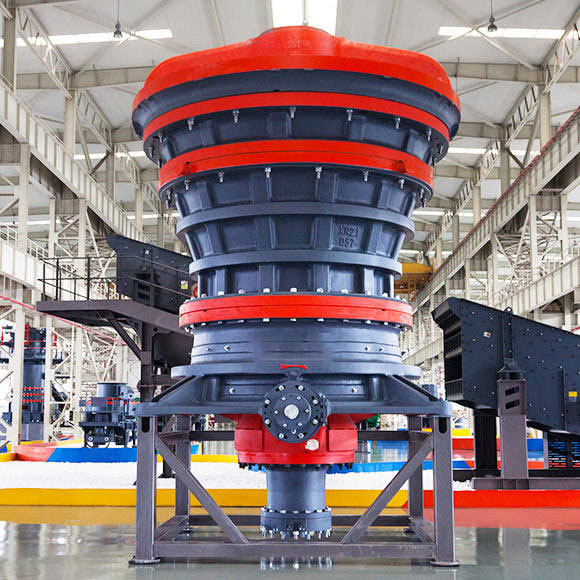The gyratory crusher mainframe assembly is a critical component of the gyratory crusher, which is widely used in primary crushing operations in industries such as mining, aggregate, and construction. This assembly forms the base for several important components of the crusher, providing the structure needed to withstand the forces generated during crushing and to ensure the crusher operates efficiently over long periods. Here’s an overview of its design and function:

1. Mainframe Structure
The mainframe of a gyratory crusher is typically constructed from high-strength steel and is designed to endure extreme stress and strain during the crushing process. The assembly supports the crusher’s internal components, including the eccentric assembly, main shaft, crusher head, and mantle. It also provides support for the hydraulic systems and other critical subsystems that ensure smooth operation.
The mainframe consists of a frame body that houses the bearings and is usually attached to a foundation or mounting structure. This ensures that vibrations and forces during the crushing operation are effectively absorbed and transmitted to the ground or other support systems.
2. Bearing Housings and Shaft Support
Integral to the mainframe assembly are the bearing housings that house the bearings supporting the eccentric shaft. The bearings are essential for reducing friction between the moving components, allowing the crusher to operate smoothly. They also support the main shaft and facilitate its rotational motion.
In gyratory crushers, the mainframe supports the lower bearing assembly of the eccentric mechanism. This assembly is crucial for the precise alignment and rotation of the eccentric shaft, which is responsible for generating the crushing action. The mainframe, in turn, must be able to absorb the heavy forces produced during operation without distortion, which is why the frame is often made from robust steel alloys.
3. Eccentric Assembly and Main Shaft
The eccentric assembly, which is located inside the mainframe, plays a pivotal role in the gyratory crusher’s operation. It consists of an eccentric shaft and a gear assembly that drives the main shaft and the crushing head. The rotation of the eccentric assembly causes the crushing head (and its attached mantle) to move in a gyrating motion within the concave bowl liner, effectively crushing the material between the two surfaces.
The main shaft runs vertically through the assembly, and it connects to the upper part of the crushing head. The precise alignment of the main shaft within the mainframe assembly is crucial for the efficient functioning of the crusher.
4. Crusher Head and Mantle Support
At the top of the mainframe assembly is the crusher head, which is attached to the main shaft. The head holds the mantle, a conical or cylindrical piece that performs the actual crushing by coming into contact with the bowl liner during the gyrating motion. The design of the crusher head and mantle ensures that the material is gradually crushed as it moves downward through the chamber.
The mantle wears down over time and must be replaced regularly, but its design and positioning within the assembly are crucial for achieving consistent performance and preventing excessive wear on other components.
5. Hydraulic Systems and Adjustment Mechanisms
Gyratory crushers often include hydraulic adjustment systems that are integrated into the mainframe assembly. These systems allow operators to adjust the gap between the mantle and bowl liner, optimizing the size of the discharge material. This adjustment mechanism provides flexibility for different crushing applications and helps maintain consistent production rates.
The hydraulic system also includes lubrication and cooling systems to ensure that the mainframe, bearings, and other critical parts are properly maintained during operation.
6. Maintenance and Repair
The mainframe assembly is designed for durability, but regular maintenance is essential to prevent downtime and to extend the life of the crusher. Over time, parts like the bearing housings, eccentric assembly, and mantle support can wear down and require repair or replacement. The mainframe itself may need periodic inspections to check for cracks or other damage that could compromise its integrity.
In conclusion, the gyratory crusher mainframe assembly is the backbone of the crusher’s operation. It supports the crusher’s moving components, absorbs the tremendous forces generated during crushing, and houses key systems like bearings, hydraulics, and adjustment mechanisms. The design and maintenance of the mainframe are critical for the reliable and efficient performance of a gyratory crusher in industrial applications.

